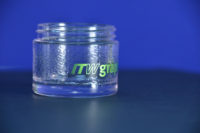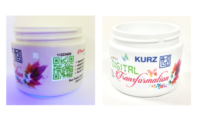Chill rolls. Heating rolls. Regardless of what they’re called, these engineered rolls all serve a similar purpose — to transfer heat energy onto or away from a web.
Heat transfer rolls are common in many converting processes today. As engineered film and specialty substrates become more prevalent, the use of these engineered rolls has increased even more. Yet, the physics of heat transfer rolls are often misunderstood. This can result in incorrect roll specifications and improper use that can directly affect web quality. Though one doesn’t have to be an engineer to properly specify and use heat transfer rolls, the right know-how can go a long way in maintaining the ideal process parameters.
The following seven heat transfer topics are common misconceptions that are routinely encountered.
Myth 1: All Heat Transfer Rolls are Pretty Much the Same
Different materials and engineering makes a significant difference in product life and performance. With converters trying to maximize performance of their equipment, most applications require some serious engineering to optimize heat transfer. Designing the right roll starts with the right operating data. Field data is best, but when it’s not available, a computer model or heat transfer simulation must be used to model the application. The engineer can use this data to design the roller with the correct internal fluid path, optimizing turbulence and maximizing heat transfer performance. The goal is to achieve balance through proper utilization of the available flow rate, achieving turbulent flow, while at the same time minimizing pressure drop.
The physical performance of the roller must also be considered. Roll body deflection and journal stress are among the most important details when engineering a roll for a specific application. Particular design techniques and special materials can be used to reduce or manage challenges with design details, such as deflection and stress. In some cases, an FEA (Finite Element Analysis) is required to determine the best materials and structure for the heat transfer roller.
Myth 2: Rotational Direction Must be Matched with Flow Direction
In a partially filled heat transfer roll, gravity pulls fluid to the bottom of the roll where spiral channels can push the fluid like an auger. In a properly filled roll with the air bled off, the spiral channels have no effect on the fluid inside as the roll turns.
Think of a double-wall heat transfer roll as a pipe bent into a helical shape. Pumping water from one direction or the other does not change how the water flows through the pipe. Turn or rotate the pipe, and the flow still remains unchanged — for practical purposes the water “doesn’t care” if the pipe itself is moving, the water is moving only in relationship to the pipe itself. Consequently, it does not matter which direction the roll turns.
Some converters still want “inlet,” “outlet” and “directional rotation” stamped on the outside of their straight-pitch heat transfer rolls and that is OK. In reality, it doesn’t matter which is which. Only on a variable pitch or “gain-pitch” roll does fluid need to be introduced at a specific end of the roll.
Myth 3: Roller Temperature Can be Controlled by the Flow Rate
Heat transfer rolls are designed to achieve a certain fluid velocity and turbulence in order to produce a transfer of energy, all while maintaining a desired Delta T (symbolized as q T, this is the difference in temperature of the fluid entering vs. leaving the roll, or the temperature gradient across the roll face).
When fluid flow is increased, the dynamics of heat exchange within the roll, along with q T, change. When energy is transferred into or away from a fluid, the flow rate of that fluid must be adequate to support the rate of heat transfer taking place. If the flow rate is inadequate, the result will be a large q T. While fluid temperature should be adjusted to control roll temperature, the higher the difference between web and roll temperature, the higher the heat transfer driving force and the greater the fluid flow rate must be to maintain consistent temperature across the face of the roll.
For example, over time, the heat load was increased on a 48-inch diameter hot oil roll designed to bond two webs. The roll was originally designed at a specific flow rate that was no longer adequate to support the process. To compensate for the increased heat load, the operators increased the oil temperature, but the roll design restricted the fluid flow rate. The result was oil temperature at 380˚F coming in and 340˚F exiting (a 40 degree q T). The web was getting “burnt” on the entry side of the roll and not bonding on the exit end. The solution was in the design of new rolls with larger journals that could accept a much higher flow rate to get q T to less than 10˚F.
q T is controlled by flow — and that is almost exclusively determined by the design of the roll. By design, q Ts can be achieved as low as 1˚F. The appropriate q T for any application is dictated by the criticality of the process. Fluid temperature will control roll temperature but flow rate is ultimately the driver to uniform q T.
Myth 4: The Supplier Will Know What Surface Finish is Needed for the Process
It’s common for a customer to ask for a “mirror finish” on their heat transfer roll… or a “matte” finish. In most cases, these terms are used too loosely.
Surface finishes are specified by Ra — a value representing the roughness or peak-to-valley measurement of a surface. An Ra under 4 micro inches is typically considered a mirror finish. Mirror finishes can go lower than 0.5 Ra, but cannot be mechanically measured at that tolerance without damaging the surface. The lower the number, the finer the finish and more exact the reflection. Accordingly, cost goes up as Ra goes down.
Matte finishes are even more varied than mirror specifications, sometimes requiring both an Ra value and a gloss rating.
Specifying the proper Ra is critical in achieving the desired web finish. Clear web finishes require roll finishes at the lower Ra range. Not every converter needs a perfectly clear web — nor the cost associated with a fine mirror finish roll.
If the needed Ra spec is unknown, a good roll provider can often help by either examining a sample of the finished product or the existing roll. Examining an existing roll is preferred.
Process knowledge and experience is key to determining the proper finish on a roller, but many times, assistance can be provided over the phone by an experienced roll provider who understands coatings and finishes. Specific and measurable values must be used to specify a roll surface finish. Avoid using ambiguous terms such as “mirror” or “matte” that mean something different to everyone who encounters them.
Myth 5: A Double-Wall Heat Transfer Roll is Always the Correct Choice
Whenever the goal is to control web temperature, a double-wall spiral heat transfer roll is imperative. Sometimes the goal is simply to maintain a general temperature of a specific roll. Then, a single-wall heat transfer roll becomes the most cost-effective solution.
For example, a rubber-covered nip roll opposing a heated roll — the bond between the rubber covering and the roll core might be at risk if the nip roll gets too hot. A single-wall, rubber-covered heat transfer roll easily maintains an acceptable nip roll temperature. In a different application, heated single-wall rolls are used to keep an adhesive coating warm during a coating operation.
Myth 6: Any Water Will Work in a Heat Transfer Roll
Water chemistry varies throughout the country and it’s a known fact that water acidity, scale and hardness can affect the life and performance of a heat transfer roll.
Some converters run city water, ground water or even river water through their heat transfer rollers. Untreated water can contain all sorts of unwanted minerals and a chemistry that causes excessive rust and other deposits to build up in the flow passages of a heat transfer roll.
A closed-loop system that uses conditioned and treated water is the ideal way to ensure the life and performance of a heat transfer roll. It’s not much different than the coolant system in your car. Properly maintained with the correct fluid chemistry, the system will operate trouble free for years.
Myth 7: Bigger is Always Better
It is true that heat transfer is all about dwell time (web on roll). It is also true that a larger roll will give you a longer contact surface and therefore more dwell time. Yet, there are other factors in play.
A boundary layer is a component in the system inhibiting or slowing heat transfer. In this case, the principle boundary layer is air trapped between the web and the roll. This boundary layer is a function of web speed, web tension and roll diameter. As the roll diameter increases, so does the boundary layer, diminishing heat transfer.
In addition, the use of smaller, multiple rollers can be configured to contact both sides of the web. This can be a real advantage with thicker webs. Finally, the cost of two smaller rollers may be less than the cost of one larger roller.
Maxcess



